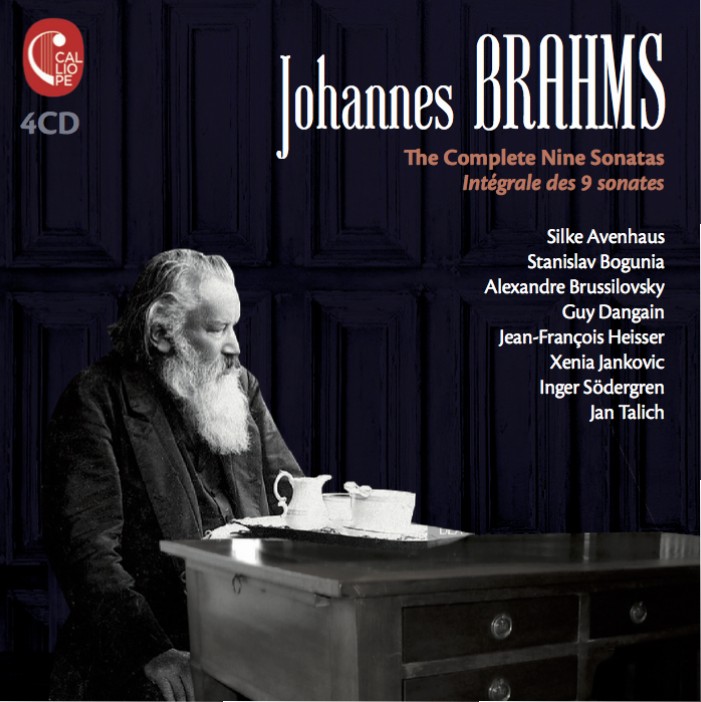Johannes Brahms – The Complete Nine Sonatas
Since childhood, Johannes Brahms (1833–1897) has been creating wonders with his piano and his composition. In the 1850s, he was able to make a living out of his art. is is the period he met many key musicians for his career: Clara and Robert Schumann and the violinists Joseph Joachim and Eduard Remény. He is encouraged by Liszt, Berlioz and during all his life, mingled in the music circles with personalities such as Wagner or Dvorak. His works are often praised and appreciated. Although he mainly composed for piano solo and orchestra, Brahms took his rst steps into chamber music in 1866 with his Sonata for Cello, op. 38. is chamber music period is the most inspired and sentimental of his repertoire. Many Lieder, Trios, Quartets, Quintets and Sextets, as well as his Sonatas for solo instruments with piano are gathered in this album.
Fourteen years only after his very first Sonata for Cello, Brahms composed his next Sonata, for Violin and Piano, op. 78, in 1879. Much later in life, the composer wrote maturer chamber music pieces to di erentiate himself from his maestro Beethoven (specially for Quartets). Indeed, there is a real evolution in his composition. e second and the last of his three Sonatas for Violin (op. 100 in 1886 and op. 108 in 1888) are breaking free from the classical in uence of Bach, Mozart or Beethoven. And the gap is even bigger between the two Sonatas for Cello and Piano – twenty years: between 1862 and 1865 for op. 38 and 1886 for op. 99. In the latter, the composing of Brahms draws away from his early classical in uences and forms. It is much more passionate.
A few years later, Brahms met Richard Mühlfeld, the clarinettist virtuoso (from the Meiningen court Orchestra). At his side, he explored in depth the possibilities of the instrument. In his time, Mozart also composed a Concerto for Clarinet, as well as a Quintet with Clarinet, after having listened to Anton Stadler, the clarinettist, in 1791. For the Romantics, Carl Maria von Weber is the one who composed the best music for this instrument with many pieces between 1811 and 1816. Brahms’s encounter with Mühlfeld is decisive.
He composed his last four chamber music works for clarinet: Trio, op. 114, Quintet, op. 115; then, during the 1894 summer, two Sonatas for Clarinet, op. 120, dedicated to Mühlfeld. ey are the wonderful expression of a melodic language with an intimate, free and meditative theme. A few years later, at the request of Simrock, his publisher, the composer transcribed these Sonatas for alto and piano. e piano part remains identical. But although the alto’s tessitura is similar to the clarinet, a few unavoidable alterations due to its technique can be spotted. But it does not remove the elegance of these two last chamber music works by Brahms.
